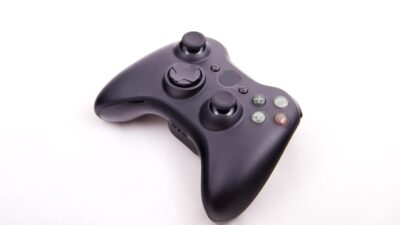In the ever-evolving world of gaming, having a powerful and efficient rig can make a significant difference in your gaming experience. Building your own gaming PC allows for customization, upgradability, and performance that off-the-shelf models often can’t match. Whether you’re a seasoned gamer or a novice, this guide will walk you through the steps of constructing your ultimate gaming rig.
Step 1: Determine Your Budget
Before selecting components, it’s essential to establish a budget. High-end components can get expensive quickly, so decide on a price range that balances performance and your financial limits. Consider potential future upgrades as well.
Step 2: Choose Your Components
The major components of your gaming rig include:
1. CPU (Central Processing Unit)
- The brain of your system. Look for high-performance CPUs like AMD Ryzen or Intel Core series based on your needs.
2. GPU (Graphics Processing Unit)
- The most crucial component for gaming performance. Select a graphics card like NVIDIA GeForce or AMD Radeon that fits your gaming requirements and budget.
3. Motherboard
- Ensure compatibility with your CPU and GPU. Consider features such as ports, slots, and form factor (ATX, Micro-ATX).
4. RAM (Memory)
- Aim for at least 16GB (or 32GB for heavy multitasking or streaming). Higher speeds (e.g., DDR4 3200+ MHz) can also improve performance.
5. Storage
- SSDs (Solid State Drives) are preferable for speed, with capacities ranging from 500GB to several terabytes. Consider an HDD for additional bulk storage.
6. Power Supply (PSU)
- Ensure it provides enough wattage for your components with some headroom for future upgrades. Look for a PSU with an 80 Plus certification for efficiency.
7. Cooling System
- Adequate cooling is vital for performance. Opt for air coolers or liquid cooling solutions, paying attention to noise levels and aesthetics.
8. Case
- Choose a case compatible with your motherboard and offers good airflow, cable management, and aesthetics that suit your style.
9. Peripherals
- Don’t forget about a quality monitor, keyboard, mouse, and headset! They also contribute significantly to the overall gaming experience.
Step 3: Assemble Your Gaming Rig
1. Prepare Your Workspace
- Find a clean, static-free area. Gather tools, mainly a Phillips screwdriver and anti-static wrist strap.
2. Install the CPU
- Open the CPU socket on the motherboard and carefully place the CPU into it without touching the pins.
3. Install RAM
- Insert the RAM sticks into the appropriate slots on the motherboard. Check the motherboard manual for the ideal configuration.
4. Attach the Motherboard to the Case
- Place standoffs in the case and screw the motherboard in, making sure it is firmly secured.
5. Install the GPU
- Insert the GPU into the PCIe slot and secure it with screws. Ensure a power connection from the PSU is available.
6. Install Storage Drives
- Mount SSDs/HDDs in the designated areas and connect them to the motherboard using SATA cables.
7. Power Supply Installation
- Place the PSU in the case and connect all necessary power cables to the motherboard, GPU, and drives.
8. Cooling Installation
- If using air coolers, mount them according to the instructions. For liquid coolers, install the radiator and fans as necessary.
9. Cable Management
- Organize and secure cables for better airflow and aesthetics. This step not only looks better but also keeps your components cool.
Step 4: BIOS and OS Setup
1. Power On the System
- Check to ensure everything is connected. Power on and access the BIOS to configure settings like boot order and fan speeds.
2. Install the Operating System
- Use a USB drive or optical disk to install your preferred operating system, typically Windows for gaming.
3. Install Drivers
- Once the OS is up and running, install necessary drivers for the motherboard and GPU for optimal performance.
Step 5: Optimize and Enjoy
1. System Updates
- Check for system updates and drivers to ensure everything is running smoothly.
2. Benchmarking and Overclocking
- Use benchmarking software to gauge performance. If comfortable, consider overclocking components for enhanced performance.
3. Load Your Games
- Install your favorite games and enjoy your ultimate gaming experience!
Conclusion
Building your ultimate gaming rig can be a rewarding experience that provides superior performance tailored to your gaming style. With the right components and care, your custom-built PC will serve you well for years to come. Happy gaming!


